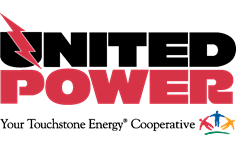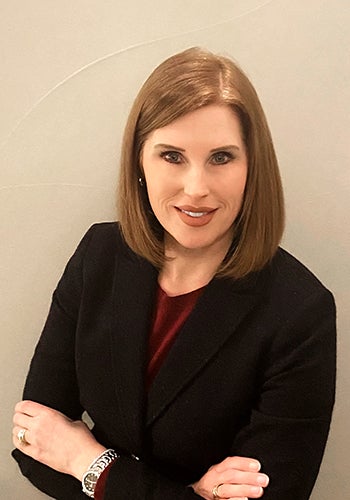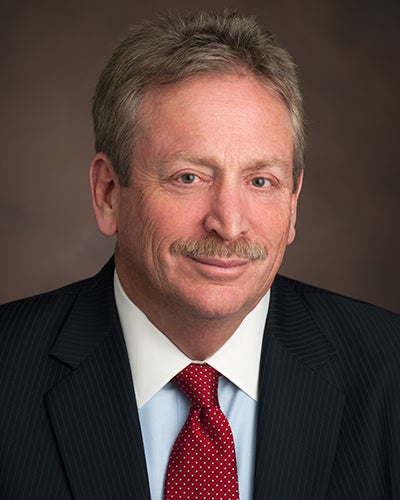Cooperative Committed to Providing Accessible EV Charging Infrastructure
Brighton, CO – United Power announced a partnership with the National Electric Highway Coalition in January. The Coalition is a collaboration among electric utilities committed to providing an accessible electric vehicle charging infrastructure. Expanding the available charging network will allow electric vehicle drivers to travel with confidence along corridors throughout the country. It has set a goal to achieve a sufficient electric vehicle charging infrastructure by the end of 2023.
This past year, United Power energized its second electric vehicle fast charger at the Market Street Mart in Keenesburg, located along Interstate 76 northeast of Denver. The charger filled a gap in available charging options for rural electric vehicle owners between Brighton and Fort Morgan. The cooperative installed its first charging station at its Coal Creek office in 2019. A third is planned for its office location in Carbon Valley along Interstate 25.
“United Power serves more than 100,000 members living in some of the fastest growing communities in the country,” said Mark A. Gabriel, United Power’s President and Chief Executive Officer. “We also serve several transportation corridors running through those areas. We have seen a proliferation of electric vehicle owners in our territory and in Colorado in recent years. Joining the National Electric Highway Coalition reinforces the cooperative’s commitment to its members and the changing nature of the electric industry.”
Cooperative leadership continues to look at the electric vehicle landscape and consider what programs provide the most benefit for members, including expanding its existing charging network. As a partner in the National Electric Highway Coalition, United Power will seek to accomplish an efficient and effective deployment of electric vehicle fast charging stations within its service territory that complements existing and planned charging stations along its transportation corridors.
It is estimated that more than 100,000 fast charging ports will be necessary to meet the needs of more than 22 million electric vehicle drivers by 2030. The National Electric Highway Coalition represents the largest group of electric utilities aligned to meet those charging infrastructure needs. More than 50 electric utilities throughout 47 states have joined as partners in the coalition’s mission. United Power joins Xcel Energy as the only other Colorado utility in the Coalition and the second cooperative nationwide.
United Power is a member-owned, not-for-profit electric cooperative, delivering electricity to homes, farms and businesses throughout Colorado’s northern front range. The cooperative is one of the fastest-growing electric cooperatives in the nation, and in June joined the elite ranks of cooperatives serving more than 100,000 meters. The 900 square mile service territory extends from the mountains of Coal Creek and Golden Gate Canyon, along the I-25 corridor and Carbon Valley region, to the farmlands of Brighton, Hudson and Keenesburg. United Power is also a founding member of the NextGen Cooperative Alliance, dedicated to expanding the power supply and procurement options and reforming the traditional Generation and Transmission (G&T) business model. For more information about the cooperative, visit www.unitedpower.com or follow them on social media Facebook, Twitter, LinkedIn, YouTube and Instagram.
###



 Brighton, CO – United Power announces Trista Fugate as its new Senior Vice President and Chief Marketing Officer in January. Fugate comes to the cooperative after spending the past two years with Platte River Power Authority in Fort Collins and more than twelve years with Pedernales Electric Cooperative, the largest cooperative utility in the country. At United Power, she will be responsible for directing all phases of the cooperative’s member marketing and new program initiatives, including residential, commercial and industrial programs, products and services.
Brighton, CO – United Power announces Trista Fugate as its new Senior Vice President and Chief Marketing Officer in January. Fugate comes to the cooperative after spending the past two years with Platte River Power Authority in Fort Collins and more than twelve years with Pedernales Electric Cooperative, the largest cooperative utility in the country. At United Power, she will be responsible for directing all phases of the cooperative’s member marketing and new program initiatives, including residential, commercial and industrial programs, products and services. At United Power we continue with our sole focus of bringing power to our members at the greatest value.
At United Power we continue with our sole focus of bringing power to our members at the greatest value.